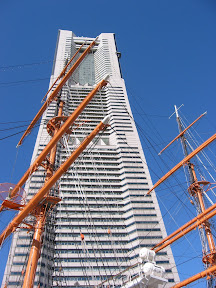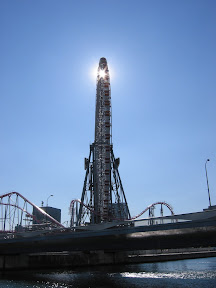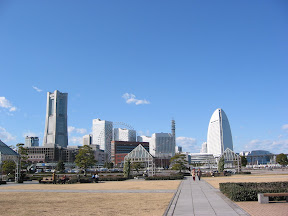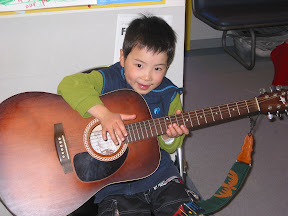Danny does Tokyo
January 30th, 2005How to describe Tokyo? Let me try. This city is all about layers. If a highway gets too crowded, lanes aren’t widened, another highway is built on top of the first…or under it. Same goes for the trains. At first glance, the map of the Tokyo train system; a combination of subway and surface trains, looks like something a cranky toddler would sketch on the dining room wall. Every color in the box of Crayolas (that’s the big box with the sharpener), is represented; and amazingly enough it all works. Riding the trains is entertainment in itself. I hold my breath every time I step out of the train station to see what is in store for me. Is it bustling Shinjuku, the business hub; or Shibuya (Shi-BOO-YA), with all it’s dazzling lights; or the historic charm of Asakusa or Ueno? The malls of Odaiba, the endless ski and snowboard shops of Ochanomizu, the buzzing hum of electronics in Akihabra, or the glitz and glam of Ginza? What…….? It is all of those things. But the best part about Tokyo is that no matter what train station you stop at, you feel like you’ve arrived someplace new and exciting. Sure, there are tall buildings and lights and people, people, people. But there are also subtle differences. Here’s an exercise for you. Think of the coolest urban place you’ve ever been. Now inject that thought with a Barry Bonds-size dose of steroids. That’s Tokyo. But despite the bulking up that neighborhoods in Tokyo have done in the past 60 years, they haven’t lost their charm, history, and specific utility. Product specific stores congregate together and compete so that just about anyone, from any socio-economic class, can go into a neighborhood and get what they need. The fashion savvy person will go to the high-end store, pay full retail and walk out happy. The penny pincher will look for the sales. And the folks hard on their luck will go to the outlet store that buys up all of the crap from last year that the other stores couldn’t sell. It’s capitalism thriving, truly. (Don’t tell Walmart.) I have to say that Tokyo is far less intimidating than I had expected. Yes, there are 12 million people rushing by you constantly, but if you’re not on a time schedule and just there to see the sights, they are endless indeed. Come to Japan and I’ll show you.












